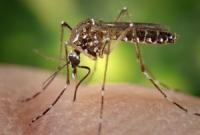-
Sanitizers made of paper kill bacteria dead
Imagine wearing clothes with layers of paper that protect you from dangerous bacteria. Now you can: Researchers have invented an inexpensive, effective way to kill bacteria and sanitize surfaces with devices made of paper. The motivation for the invention was to create personal protective equipment that might contain the spread of infectious diseases, such as the devastating 2014 outbreak of Ebola in West Africa.
-
-
Preventing yellow fever resurgence
Many people might not have heard of the Aedes aegypti mosquito until this past year, when the mosquito, and the disease it can carry – Zika – began to make headlines. But more than 220 years ago, this same breed of mosquito was spreading a different and deadly epidemic in Philadelphia and just like Zika, this epidemic is seeing a modern resurgence, with Brazil at its epicenter. “The challenge with diseases like yellow fever and Zika is that the conditions that foster an outbreak are not always avoidable, especially in tropical climates, and therefore a vaccine is needed to prevent infection,” says one expert.
-
-
Improving speed, effectiveness of clinical trials during an epidemic

Mobilization of a rapid and robust clinical research program that explores whether investigational therapeutics and vaccines are safe and effective to combat the next infectious disease epidemic will depend on strengthening capacity in low-income countries for response and research, engaging people living in affected communities, and conducting safety trials before an epidemic hits, says a new report. Using key lessons learned from the Ebola epidemic in West Africa, the report outlines how to improve the speed and effectiveness of clinical trial research while an epidemic is occurring, especially in settings where there is limited health care and research infrastructure.
-
-
A big-picture look at the world’s worst Ebola epidemic: West Africa, 2013-2016
The 2013-2016 West African Ebola epidemic dwarfed all previous central African outbreaks of the virus, sickening more than 28,000 people and killing more than 11,000 of them. New study of the epidemic reveals insights into factors that sped or slowed the rampage – for example, that the epidemic unfolded in small, overlapping outbreaks with surprisingly few infected travelers sparking new outbreaks elsewhere, each case representing a missed opportunity to break the transmission chain and end the epidemic sooner. Scientists call for using real-time sequencing and data-sharing to contain future viral disease outbreaks.
-
-
Improving predictions of outbreaks of Ebola, Lassa fever
Many of the major new outbreaks of disease, particularly in Africa, are so-called zoonotic infections, diseases that are transmitted to humans from animals. The Ebola virus, for example, which recently killed over 11,000 people across Africa, was most likely transmitted to humans from fruit bats. Potential outbreaks of diseases such as Ebola and Lassa fever may be more accurately predicted thanks to a new mathematical model developed by researchers at the University of Cambridge. This could in turn help inform public health messages to prevent outbreaks spreading more widely.
-
-
Monitoring the emergence of infectious diseases
Zoonotic diseases that pass from animal to human are an international public health problem regardless of location — being infected with Campylobacter from eating undercooked chicken in the U.K. is not uncommon, for example — but in lower-income countries the opportunities for such pathogens to enter the food chain are amplified.
-
-
WHO issues list of bacteria for which new antibiotics are urgently needed
WHO today published its first ever list of antibiotic-resistant “priority pathogens” – a catalogue of twelve families of bacteria that pose the greatest threat to human health. The list was drawn up in a bid to guide and promote research and development (R&D) of new antibiotics, as part of WHO’s efforts to address growing global resistance to antimicrobial medicines.
-
-
Risk of Ross River Virus could be next global epidemic
Australia’s Ross River Virus (RRV) could be the next mosquito-borne global epidemic according to a new research. The virus has been thought to be restricted largely to Australia and Papua New Guinea where it is harbored by marsupial animals, specifically kangaroos and wallabies, and spread by mosquitoes. The research shows that the virus may have been circulating silently in the South Pacific ever since a large epidemic of more than 500,000 cases in 1979-80, thought to have been started by an infected Australian tourist who travelled to Fiji.
-
-
Device rapidly, accurately, inexpensively detects Zika virus at airports, other sites
About the size of a tablet, a portable device that could be used in a host of environments like a busy airport or even a remote location in South America, may hold the key to detecting the dreaded Zika virus accurately, rapidly and inexpensively using just a saliva sample. While scientists across the world are scrambling to find some sort of immunization, researchers are working to develop a diagnostic tool to reduce the impact of the outbreak until a vaccine is identified.
-
-
Contact tracing, targeted insecticide spraying can curb dengue outbreaks

Contact tracing — a process of identifying everyone who has come into contact with those infected by a particular disease — combined with targeted, indoor spraying of insecticide can greatly reduce the spread of the mosquito-borne dengue virus. The new approach of using contact tracing to identify houses for targeted insecticide spraying was between 86 and 96 percent effective in controlling dengue fever during the Cairns outbreak. By comparison, vaccines for the dengue virus are only 30 to 70 percent effective, depending on the type of virus — or serotype — involved.
-
-
Acting fast: Two months to stop pandemic X from taking hold
Over the past several years, DARPA-funded researchers have pioneered RNA vaccine technology, a medical countermeasure against infectious diseases that uses coded genetic constructs to stimulate production of viral proteins in the body, which in turn can trigger a protective antibody response. As a follow-on effort, DARPA funded research into genetic constructs that can directly stimulate production of antibodies in the body.
-
-
Disease “superspreaders” were the driving cause of 2014 Ebola epidemic

A new study about the overwhelming importance of “superspreaders” in some infectious disease epidemics has shown that in the catastrophic 2014-15 Ebola epidemic in West Africa, about 3 percent of the people infected were ultimately responsible for infecting 61 percent of all cases. The issue of superspreaders is so significant, scientists say, that it’s important to put a better face on just who these people are. It might then be possible to better reach them with public health measures designed to control the spread of infectious disease during epidemics.
-
-
World leaders urged to take action to avert existential global risks
World leaders must do more to limit risk of global catastrophes, according to a report by Oxford academics. He academic define global catastrophe as a risk “where an adverse outcome would either annihilate Earth-originating intelligent life or permanently and drastically curtail its potential.” Three of the most pressing possible existential risks for humanity are pandemics, extreme climate change, and nuclear war.
-
-
Malaria superbugs pose threat to global malaria control
A lineage of multidrug resistant P. falciparum malaria superbugs has widely spread and is now established in parts of Thailand, Laos and Cambodia, causing high treatment failure rates for the main falciparum malaria medicines, artemisinin combination therapies (ACTs). The emergence and spread of artemisinin drug resistant P falciparum lineage represents a serious threat to global malaria control and eradication efforts.
-
-
Global partnership to prevent epidemics with new vaccines launched
A global coalition to create new vaccines for emerging infectious diseases, designed to help give the world an insurance policy against epidemics, launches today at the World Economic Forum in Davos, Switzerland.
With an initial investment of $460 million from the governments of Germany, Japan, and Norway, plus the Bill & Melinda Gates Foundation and the Wellcome Trust, CEPI - the Coalition for Epidemic Preparedness Innovations will seek to outsmart epidemics by developing safe and effective vaccines against known infectious disease threats that could be deployed rapidly to contain outbreaks, before they become global health emergencies.
-
- All
- Regional
- Water
- Biometrics
- Borders/Immig
- Business
- Cybersecurity
- Detection
- Disasters
- Government
- Infrastructure
- International
- Public health
- Public Safety
- Communication interoperabillity
- Emergency services
- Emergency medical services
- Fire
- First response
- IEDs
- Law Enforcement
- Law Enforcement Technology
- Military technology
- Nonlethal weapons
- Nuclear weapons
- Personal protection equipment
- Police
- Notification /alert systems
- Situational awareness
- Weapons systems
- Sci-Tech
- Sector Reports
- Surveillance
- Transportation
Advertising & Marketing: advertise@newswirepubs.com
Editorial: editor@newswirepubs.com
General: info@newswirepubs.com
2010-2011 © News Wire Publications, LLC News Wire Publications, LLC
220 Old Country Road | Suite 200 | Mineola | New York | 11501
Permissions and Policies
Editorial: editor@newswirepubs.com
General: info@newswirepubs.com
2010-2011 © News Wire Publications, LLC News Wire Publications, LLC
220 Old Country Road | Suite 200 | Mineola | New York | 11501
Permissions and Policies
